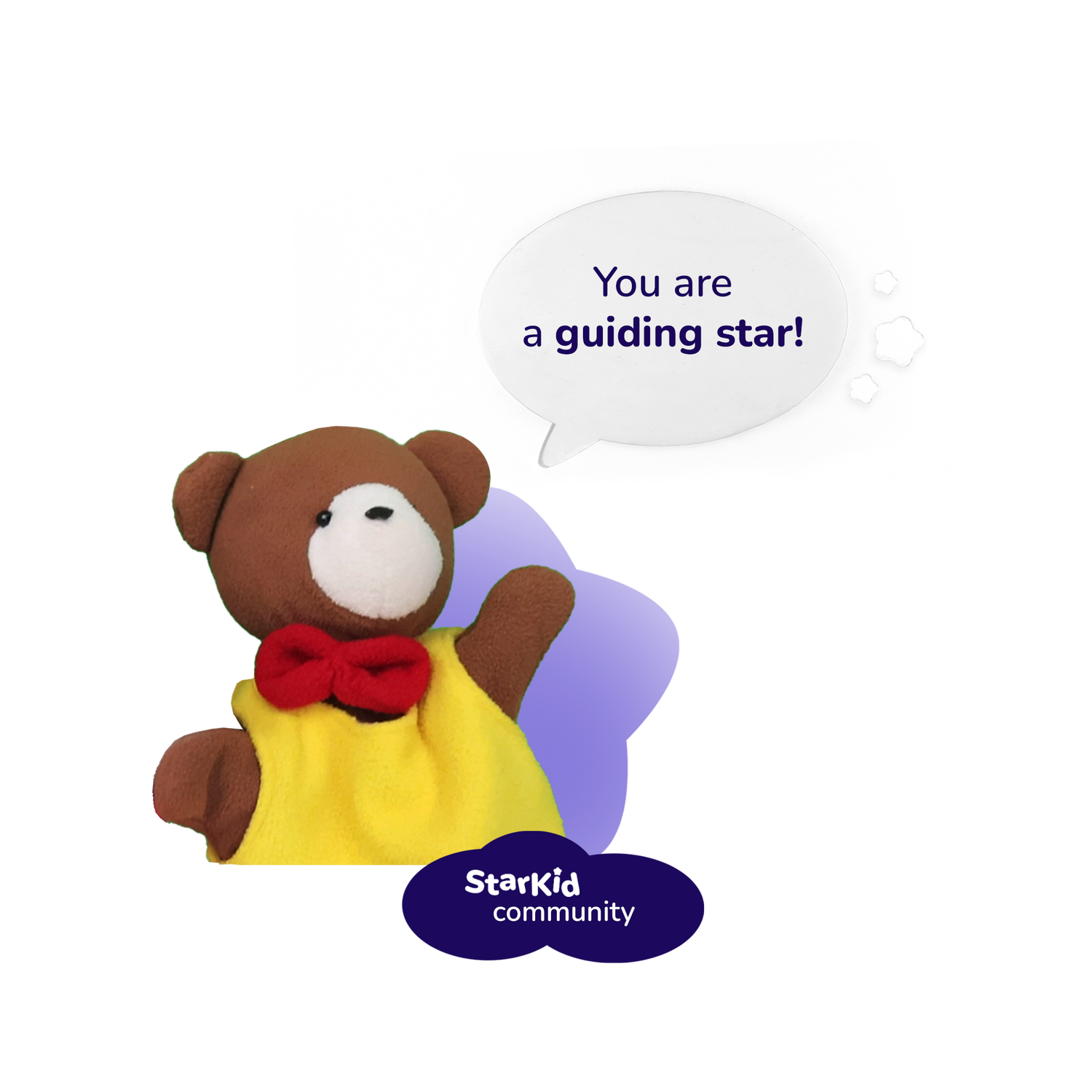🕒 Reading Time: 7–9 minutes
Table of Contents
Introduction: Mindfulness and Autism
Transforming Challenges into Opportunities with Mindfulness
Journeying Together: Mindfulness as a Balance in ASD Family Life
Embrace Yoga and Mindfulness for Your Family’s Journey with Autism
Mindfulness Practices to Try at Home
Discover Mindfulness with Our Upcoming Online Course
Embark on a Transformative Journey with Us
Mindfulness as a Superpower: Navigating Autism Spectrum Disorder with New Perspectives
Autism Spectrum Disorder shapes the lives of millions of families throughout the world. Most parents and caregivers who support autistic children now supplement regular therapy with mindfulness-based interventions. This article investigates mindfulness as an instrumental method for managing autism symptoms by presenting novel insights for families facing an autism diagnosis.
Social behavior is substantially affected by overwhelming sensory experiences and intense stress responses that occur alongside ASD. These children experience immune-digestive disorders, which cause their social fears and anxiety to increase, according to Rodríguez-Gomez et al. (2021).
Our organization holds strong faith in mindfulness because it is especially beneficial for people who are neurodiverse. Your family would benefit greatly from implementing mindfulness strategies, as these practices assist caregivers in managing sensory overload with their loved ones. The suggested method shows promise in advancing social skills and improving life quality for everyone in your family.
Transforming Challenges into Opportunities with Mindfulness
StarKid Universe approaches ASD-related emotional and physical challenges through mindful practices, under the belief that this method represents a kind-hearted therapeutic response.
Intervention programs that use yogic principles have produced significant improvements in well-being for both ASD patients and their caregivers. Researchers have confirmed the long-term effects of this positive change through their analysis “Mindfulness for Children and Adults with Autism Spectrum Disorder and Their Caregivers,” as well as related studies. Mindfulness-based therapies create sustained positive effects for children and adults who have ASD.
Integrating mindfulness practices into your family’s everyday life can lead to major beneficial changes. Adjusting mindfulness methods to personal needs—including guided visualization, breathing meditation, and restful hatha yoga—leads to better attention control, reduced stress, stronger emotional regulation, and improved sleep patterns. Mantra meditation proves beneficial for autistic children by helping brain signals achieve relaxation.
Holistic therapies that include mindfulness and meditation offer ASD patients supplementary support in managing symptoms alongside existing autism therapies. Autism Spectrum Disorder management benefits from the combination of behavioral therapies and mindfulness, as this approach reduces symptoms while enhancing quality of life (Hartley et al., 2019).
Journeying Together: Mindfulness as a Balance in ASD Family Life
Research findings published in Mindfulness (2018) by Ridderinkhof et al. demonstrate the effectiveness of mindfulness-based programs for ASD-affected children and their families. The MYMind program serves as a significant example of a program dedicated to helping younger ASD children and their parents. This program divides sessions between child-specific groups and parental groups to evaluate reductions in ASD-related challenges over time. The outcomes were important, demonstrating that children achieved better emotional and behavioral results along with decreased social communication difficulties. The benefits established through the program remained throughout a two-month follow-up period, and several even extended beyond one year.
Participants reported direct benefits for parents, including better emotional and behavioral health, improved parenting ability, and enhanced mindful practices. The positive effects remained stable regardless of the observation period. The social communication difficulties of ASD parents decreased immediately after completing the mindfulness intervention due to its family-wide impact.
This research supports joint mindfulness training programs for children and parents, recognizing the specific difficulties ASD families face. Mindfulness continues to show benefits beyond symptom management by building lasting family resilience and overall well-being (Ridderinkhof et al., 2017).
Embrace Yoga and Mindfulness for Your Family’s Journey with Autism
Your path with Autism Spectrum Disorder (ASD) and your family requires seeking new ways to access support and connection. The study titled "Implementation Fidelity of a Mindfulness-Based Yoga Program for Children with Autism Spectrum Disorder and Their Families" demonstrates the transformative power of yoga combined with mindfulness. The 10-week yoga program consisted of separate yet simultaneous sessions for both children and their parents among eight participating families. The results were uplifting:
- Practicing yoga allowed parents to experience reduced stress levels and greater emotional stability.
- Such sessions offered children emotional well-being through positive engagement and joyful experiences.
- Home-based family mindfulness practice expanded these benefits by strengthening relationships and communication.
- Separate sessions for parents and children allowed family members to receive individualized support through a shared enriching activity (Garcia et al., 2019).
The Yoga Journal website offers videos for children with autism that you can access at home (Autism, 2021). Through these accessible resources, your family can implement yoga and mindfulness practices into daily life, leading to unified well-being within your household.
Mindfulness Practices to Try at Home
Newcomers who want to start slowly can achieve good results by adding basic mindfulness practices to their everyday routines. Some exercises that children can do at home with their parents include:
- Breath Visualization: The child should visualize breathing in calm blue and blowing out gray stress. This visualization helps them center their breathing and gain emotional control.
- Tactile Exploration: Give children items with different textures and have them describe how each material feels. This exercise increases awareness of physical sensations and reduces sensory confusion.
- Nature Walks: Take your child for a slow-paced walk in a park or garden. Let them focus on identifying one element at a time—from large leaves to bright flowers, tree bark, or bird sounds. This improves environmental perception, promotes relaxation, and strengthens attention.
- Mindful Eating: Make snack time mindful by encouraging your child to pay close attention to each bite. Have them describe the taste, texture, and how the food makes them feel.
🎧 Looking for more inspiration?
Explore our Mindfulness Episodes - short, calming audio and video sessions created for children and parents. Each episode guides your family through simple breathing exercises, body awareness, and emotional grounding techniques that fit perfectly into everyday life.
Start watching or listening today to build your mindfulness moments - anytime, anywhere.
https://www.starkiduniverse.com/account
Discover Mindfulness with Our Upcoming Online Course
Our team has developed an online training program to help you integrate mindfulness into your daily household routine. The course offers simple steps and essential insights for parents of autistic children to implement mindfulness practices with ease. This program supports family well-being, reduces autism symptoms, and builds intimacy among family members.
Are you ready to initiate beneficial personal change? Take our course and let us show you a peaceful approach to daily life—one that benefits both you and your child.
Embark on a Transformative Journey with Us
When you incorporate mindfulness into your autism care approach, it transforms your ability to manage symptoms and fosters greater well-being for your autistic child. Our meticulously designed online course offers step-by-step guidance and support throughout your journey.
Are the potential benefits of mindfulness for autistic children calling to you? Subscribe to our newsletter to receive fresh insights, useful tips, and strategies. Learn more about our in-depth online course for family members and caregivers—a program that delivers real-life impact.
The practice of mindfulness helps you discover a path toward enhanced family harmony, deeper understanding, and greater happiness. With mindfulness, Autism Spectrum Disorder challenges can become opportunities for growth and connection.
Resources:
Autism, P. B. J. Y. a. a. F. (2021, September 14). A Grounding Yoga Practice for Kids with Autism. Yoga Journal. https://www.yogajournal.com/video/yoga-for-autism-introduction-to-yoga-for-kids-with-autism-yoga-videos/
Garcia, J. M., et al. (2019). Implementation Fidelity of a Mindfulness-Based Yoga Program for Children with Autism Spectrum Disorder and Their Families: A Pilot Study. Advances in Neurodevelopmental Disorders, 3(1), 54–62. https://doi.org/10.1007/s41252-018-0091-3
Hartley, M., Dorstyn, D., & Due, C. (2019). Mindfulness for Children and Adults with Autism Spectrum Disorder and Their Caregivers: A Meta-analysis. Journal of Autism and Developmental Disorders, 49(10), 4306–4319. https://doi.org/10.1007/s10803-019-04145-3
Rodríguez-Gomez, D. A., et al. (2021). A systematic review of common genetic variation and biological pathways in autism spectrum disorder. BMC Neuroscience, 22(1). https://doi.org/10.1186/s12868-021-00662-z
Salem-Guirgis, S., et al. (2019). MYmind: A Concurrent Group-Based Mindfulness Intervention for Youth with Autism and Their Parents. Mindfulness, 10, 1730–1743. https://doi.org/10.1007/s12671-019-01107-9
Samosiuk, S. (2021). Autism Treatments: Beyond Applied Behavioral Analysis Therapy. https://core.ac.uk/download/427317380.pdf
Sequeira, S., & Ahmed, M. (2012). Meditation as a potential therapy for autism: a review. Autism Research and Treatment, 2012, 835847. https://doi.org/10.1155/2012/835847


